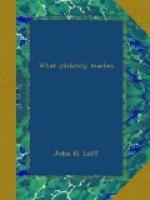[Illustration: Burelage]
[Illustration: Control Number, 70]
[Illustration: Moiree Pattern]
One of the nightmares of every government is the fear that its securities will be counterfeited or tampered with. I have several times mentioned precautions against such abuses in the shape of fine engraving, watermarks, enameled paper, sensitive inks, etc. There are numerous other devices which have been used with the same end in view. The patterns here shown were printed on the backs of the stamps in blue ink. The first is a band of interlaced lines, called a burelage. The second is a sort of control number. The number differs for each stamp on the sheet. The third resembles the lines in watered silk and is called moiree. It covers the entire back of the sheet. Sometimes the stamps are covered with a network which only becomes visible on the application of certain chemicals. In this country the experiment has been tried of breaking the fibre of the paper by pressing into the stamps a group of tiny pyramids, called a grill. The idea was that the cancelling ink would penetrate the broken paper and could not be removed.
We cannot finish our study of the material side of stamps without reference to another feature, i.e., surcharges. Correctly speaking, a surcharge is an added charge, but in philately the term is applied to a variety of overprints, the majority of which indicate a reduction rather than an increase in value. Years ago the word surcharge usually suggested a makeshift, something of a temporary nature prepared to meet an emergency and, therefore, interesting and likely to become valuable. But our little weaknesses are now well understood by those who are exploiting the commercial side of postage stamps and we have reason to fear that many recent surcharges were made for revenue only and not from any real necessity. The majority of surcharges are made to supply a value which has been temporarily exhausted. For example, many of the British Colonies obtained their supplies of stamps in London. It may happen that an order is not placed early enough or there is delay in filling it and delivering the stamps. Owing to this, the values most in use may be exhausted. Under such circumstances, it is customary to provide a temporary supply by printing the needed value on some other stamp, usually one of higher value. To use a lower value would tempt the counterfeiting of the surcharge, for the profit to be made through the increased value.
[Illustration: Stamp, “Mauritius”, surcharged 4 cents]
[Illustration: Stamp, “Gibraltar”, surcharged 5 centimos]
There are, however, a variety of other surcharges, a few of which may interest you. The first two stamps indicate a change in the form of the currency of the country, from pence to cents in Mauritius and from the English half penny to its Spanish equivalent in Gibraltar. The Seychelles stamp was prepared to meet a change in the rate for letters to countries in the International Postal Union.




